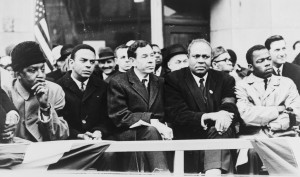By Phin Upham
At the time of the American Civil War, New York was finding itself in a very delicate place. As a financial and economic hub, the city relied on the robust Southern economy. This economy was fueled largely by slavery, which was near universally opposed by the North. New York profited from the manufacture of cotton and textile goods, and Southern businessmen frequented the city.
New York sent hundreds of thousands of men off to war when the time came, which was far more than any other Northern state. The process of conscripting these men was not without unrest, such as the Draft Riots of 1863, but the state was able to quell these challenges and help the war effort.
New York immediately shifted to developing industry within its own state borders, and post-Civil War New York was the birthright of several well-known companies. General Electric and Eastman Kodak were both formed during this era. Industry was attracted to the Buffalo/Niagara Falls area, where hydroelectric power was cheap and plentiful.
This surge of labor led to labor organizing. The Knights of Labor had been created by 1882, boasting 60,000 members. Trade Unions were also pressing for better working hours. At the same time, New York’s agriculture and dairy sectors were skyrocketing, which might seem odd to New Yorkers today. At the time, New York was home to more than 200,000 farms.
Post-Civil War era New York managed a successful transition into building its own industry. The NYSE had already grown dramatically and New York was on its way to becoming the economic center of the world.
About the Author: Phin Uphamis an investor at a family office/ hedgefund, where he focuses on special situation illiquid investing. Before this position, Phin Upham was working at Morgan Stanley in the Media and Telecom group. You may contact Phin on his Phin Upham website or Twitter page.

